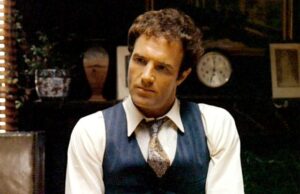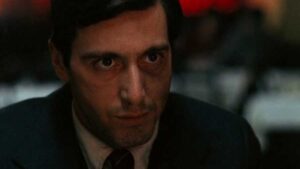by James Scott Bell
@jamesscottbell
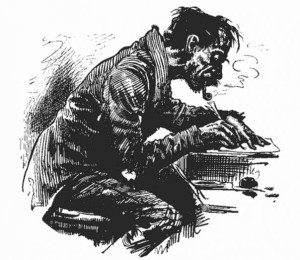 It is my great pleasure today to do my part to bring us closer to a modicum of peace between two vexatious parties. No, not those parties. I’m talking about the Hatfields and Mc…wait, I mean the plotters and the pantsers. For I am about to offer a systematic approach to beginning a novel that has the potential to do what we all aim for—sell like dang hotcakes!
It is my great pleasure today to do my part to bring us closer to a modicum of peace between two vexatious parties. No, not those parties. I’m talking about the Hatfields and Mc…wait, I mean the plotters and the pantsers. For I am about to offer a systematic approach to beginning a novel that has the potential to do what we all aim for—sell like dang hotcakes!
Yet I know how the word system immediately sets the various hairs on the back of an “intuitive” writer’s neck into a frenzy of fuzzy disequilibrium. Allow me to calm those hairs down. Because what I am proposing is in fact just another form of play and discovery, the very thing you love to do most.
Further, this system will open up vast new meadows for your imagination to frolic in, providing even more freedom than you currently experience. Because when you just start writing a story, you have already committed to things like character, setting, and situation. Yes, you now explore and “discover” as you write, but only within the confines you set up at the start.
This system will give you an infinite variety of story worlds to play with up front, so you can choose the one that gives the most float to your boat.
To my plotting friends, this system will push you to more wild creativity than perhaps you are used to. This will help you avoid one of the traps of militant outlining—making “same old, same old” choices.
So now let us say you have typed The End on your latest book…or have determined you really want to produce a first novel…and you wake up the next day, make the coffee, and set out on the journey. Give yourself 10 days.
Day 1. Grabber Idea
Make it your practice to spend some time each week in pure creativity exercises. Two of my favorites are What if? and the First-Line Game.
Train your mind to look at the world, the news, billboards, people walking on the street—and ask, “What if?” What if that elderly man at the bus stop is a serial killer on the run? What if that Bonobo chimp trying to communicate is the reincarnation of Adolf Hitler?
Collect them all, without judgment, for later review.
Write opening lines that are irresistible, without worrying about the story to follow. Collect these, too.
So, on Day 1, take out your list and see which ideas grab you most. Pick several and give them some play time. Begin to feel for the idea that most wants you to tell it.
I did the first-line game once and wrote: “Your son is alive.” I had no idea who said it or what it meant. But it wouldn’t let me go, so I wrote the novel Your Son is Alive.
Select your idea.
And there was evening and morning, the first day.
Day 2. White-Hot Document
Begin what I call a “white-hot document.” I got this idea from the great writing teacher Dwight Swain. You just begin a free-form doc writing anything that comes to mind about your idea. You follow tangents wherever they lead—plot ideas, character ideas, scene possibilities.
Talk to yourself—what is your idea trying to tell you? What is the deep tissue of the idea?
Keep writing and do not edit.
Sleep on it.
Day 3. Edit and Annotate
Look at your white-hot document. Start highlighting the parts that seem most promising. Add more ideas and possibilities.
Sleep on it.
Day 4. Edit and Annotate Again
You know the drill.
Day 5. Main Characters
Solidify your main characters—protagonist, antagonist, primary secondary characters. You don’t need extensive biographies. What you want is the why they are in this story—motives, desires, secrets
Day 6. Sell the Sizzle
All play and no work makes Jack a dull writer. So give your left brain a rest and assess the selling potential of your idea. Focus on these questions:
- Do you have a hero worth following? Why?
- Is your antagonist stronger than the protagonist? In what ways?
- Who is your audience?
- How does your idea add something fresh to what’s been done before?
Refine and reform your concept to strengthen the above.
Day 7. Pitch
Now create a focused pitch consisting of three sentences.
- (Character name) is a (vocation) who (immediate goal or desire)
- But when (doorway of no return), (Character) is (main confrontation)
- Now (Character) must (main objective)
Dorothy Gale is a farm girl who dreams of getting out of Kansas to a land far, far away, where she and her dog will be safe from the likes of town busybody Miss Gulch.
But when a twister hits the farm, Dorothy is transported to a land of strange creatures and at least one wicked witch who wants to kill her.
Now, with the help of three unlikely friends, Dorothy must find a way to destroy the wicked witch so the great wizard will send her back home.
Tweak your pitch. Ratchet up the stakes in each sentence. This will provide an indestructible base upon which to build your bestseller. Later, it can be the basis for your book description (“back cover copy”).
Day 8. Heart-Whamming Ending
Write out, at least in summary form, an ending that will move readers, that will have them cheering or weeping…or both. See it in the movie theater of your mind. Hear the musical score!
This doesn’t mean you’re wedded to it. But just by envisioning a killer final scene you feed your idea and juice your desire to write. It is subject to change without notice, but at least it gives you a North Star to guide your journey.
Day 9. Signpost Scenes
I plan out signpost scenes, as explained in my book Super Structure. The beauty of this is that it gives a the skeletal frame that will fully support the flesh and blood of your concept. Some of these scenes can be placeholders, to be given content later. I do, however, pay special attention to the Mirror Moment, which tells me what my novel is really about.
Day 10. Write a First Chapter That Grabs Them by the Throat
Give us an opening that has an immediate disturbance for the main character. Begin with action. Act first, explain later. Don’t bother with extensive exposition or backstory. You can dribble that in later. Do not, under any circumstances, write the parts that readers skip (h/t Elmore Leonard).
Nice going! You’re ready to write your book. An added tip: start a novel journal, a diary if you will, where you talk to yourself about your novel each day before you write. How do you feel about your story so far? You only need to take a few minutes to do this. Pay special attention to any notes sent upstairs by the Boys in the Basement.
Keep writing. Do only light editing on the previous day’s work, then plow forward. Schedules and life circumstances vary, of course. Is time a problem for you? Just remember: a page a day (250 words) is a book a year. A book a year is a prolific writer.
Once you finish your novel you move into the editing phase. But while you are there take 10 days to get your next novel ready.
Do this over and over again until you are dead. You’re a writer, after all. This is what you do.
Carpe Typem.
Discuss!

 There’s an old joke about a guy walking into a bar with a squirrel in a cage. The bartender says, “What’s that squirrel doing here?” And the guy says, “Thinking about his next mystery.” The bartender asks what he means, and the guy says, “My squirrel is a mystery writer.”
There’s an old joke about a guy walking into a bar with a squirrel in a cage. The bartender says, “What’s that squirrel doing here?” And the guy says, “Thinking about his next mystery.” The bartender asks what he means, and the guy says, “My squirrel is a mystery writer.” There’s a great Far Side cartoon (among so many great ones from the genius Gary Larson). It shows the back of a man seated at a desk. He has a pencil in his fingers, but his hands are grabbing his head in obvious frustration. In front of him are a series of discarded pages with MOBY DICK, Chapter 1 at the top. They say:
There’s a great Far Side cartoon (among so many great ones from the genius Gary Larson). It shows the back of a man seated at a desk. He has a pencil in his fingers, but his hands are grabbing his head in obvious frustration. In front of him are a series of discarded pages with MOBY DICK, Chapter 1 at the top. They say: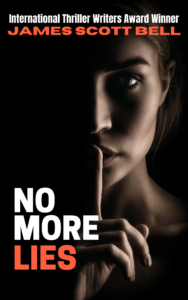
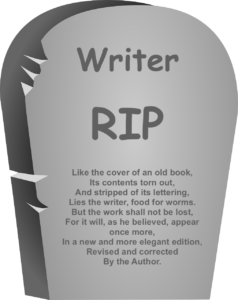
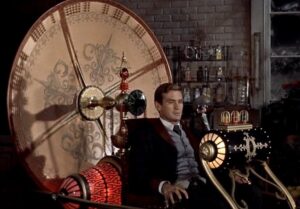
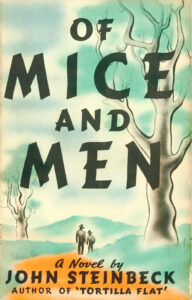

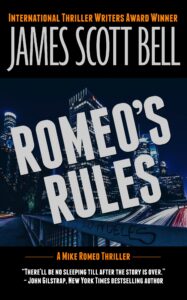
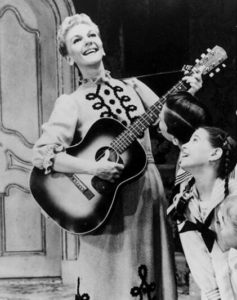
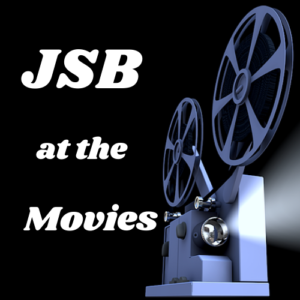 We lost
We lost 